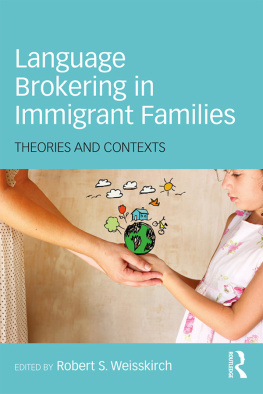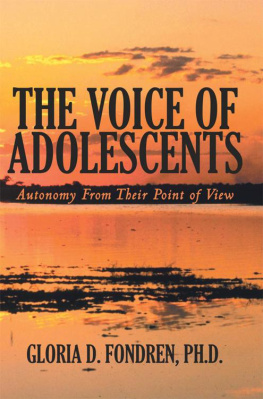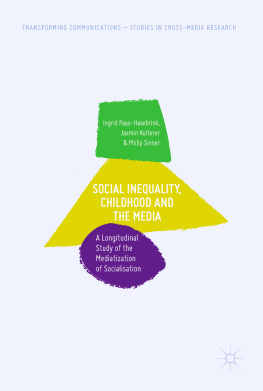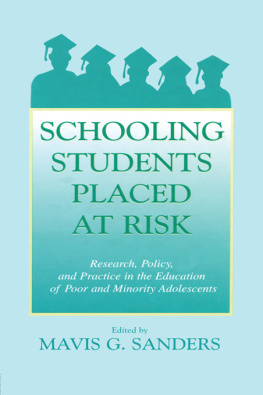T he Multilingual A dolescent Experience
BILINGUAL EDUCATION & BILINGUALISM
Series Editors : Nancy H. Hornberger (University of Pennsylvania, USA) and Wayne E. Wright (Purdue University, USA)
Bilingual Education and Bilingualism is an international, multidisciplinary series publishing research on the philosophy, politics, policy, provision and practice of language planning, Indigenous and minority language education, multilingualism, multiculturalism, biliteracy, bilingualism and bilingual education. The series aims to mirror current debates and discussions. New proposals for single-authored, multiple-authored, or edited books in the series are warmly welcomed, in any of the following categories or others authors may propose: overview or introductory texts; course readers or general reference texts; focus books on particular multilingual education program types; school-based case studies; national case studies; collected cases with a clear programmatic or conceptual theme; and professional education manuals.
All books in this series are externally peer-reviewed.
Full details of all the books in this series and of all our other publications can be found on http://www.multilingual-matters.com, or by writing to Multilingual Matters , St Nicholas House , 31-34 High Street , Bristol BS1 2AW, U K.
BILINGUAL EDUCATION & BILINGUALISM: 122
The Multilingual Adolescent Experience
S mall Stories of Integration and Socialization by Polish Families in Ireland
Malgorzata Machowska-Kosciak
MULTILINGUAL MATTERS
Bristol Blue Ridge Summit
DOI https://doi.org/10.21832/MACHOW7673
Library of Congress Cataloging in Publication Data
A catalog record for this book is available from the Library of Congress.
Names: Machowska-Kosciak, Malgorzata, 1982- author.
Title: The Multilingual Adolescent Experience: Small Stories of Integration and
Socialization by Polish Families in Ireland/Malgorzata Machowska-Kosciak.
Description: Bristol; Blue Ridge Summit: Multilingual Matters, 2020. | Series:
Bilingual Education & Bilingualism: 122 | Includes bibliographical references
and index. | Summary: Through the use of small stories and ethnographic
observation this book explores the social and cultural worlds of Polish immigrant adolescents in Ireland, the ways they seek belonging in their communities of
practice, and the ways in which they develop socio-historical understandings
across the languages and cultures they are part of Provided by publisher.
Identifiers: LCCN 2019044366 (print) | LCCN 2019044367 (ebook) |
ISBN 9781788927673 (hardback) | ISBN 9781788927680 (pdf) |
ISBN 9781788927697 (epub) | ISBN 9781788927703 (kindle edition)
Subjects: LCSH: Polish peopleIrelandSocial conditions. | Intercultural
communicationIreland. | Multilingual communicationIreland. |
IrelandEmigration and immigrationSocial aspects. |
PolandEmigration and immigrationSocial aspects. |
ImmigrantsCultural assimilationIreland.
Classification: LCC DA927.4.P6 M33 2020 (print) | LCC DA927.4.P6 (ebook) |
DDC 305.235089/91850417dc23
LC record available at https://lccn.loc.gov/2019044366
LC ebook record available at https://lccn.loc.gov/2019044367
British Library Cataloguing in Publication Data
A catalogue entry for this book is available from the British Library.
ISBN-13: 978-1-78892-767-3 (hbk)
Multilingual Matters
UK: St Nicholas House, 31-34 High Street, Bristol BS1 2AW, UK.
USA: NBN, Blue Ridge Summit, PA, USA.
Website: www.multilingual-matters.com
Twitter: Multi_Ling_Mat
Facebook: https://www.facebook.com/multilingualmatters
Blog: www.channelviewpublications.wordpress.comn
Copyright 2020 Malgorzata Machowska-Kosciak.
All rights reserved. No part of this work may be reproduced in any form or by any means without permission in writing from the publisher.
The policy of Multilingual Matters/Channel View Publications is to use papers that are natural, renewable and recyclable products, made from wood grown in sustainable forests. In the manufacturing process of our books, and to further support our policy, preference is given to printers that have FSC and PEFC Chain of Custody certification. The FSC and/or PEFC logos will appear on those books where full certification has been granted to the printer concerned.
Typeset by Deanta Global Publishing Services, Chennai, India
Contents
During the last decade, Ireland has experienced a substantial influx of immigrants. According to the 2011 census, a total of 544,357 non-Irish nationals were living in Ireland in April 2011, representing 199 different nations. The growth in the number of non-Irish nationals has continued since 2006, although at a slower pace than earlier years. The main immigrant groups include Polish (2.7%); British (2.5%); Lithuanian (0.8%); Latvian (0.5%); Romanian (0.2%); Slovakian (0.2%); and German (0.2%); and the largest non-European groups include Nigerian (0.4%); Indian (0.4%); Filipino (0.3%); US American (0.2%); and Chinese (0.2%) (Central Statistics Office, 2011). From 2006 to 2011, there was a steady increase in the number of Polish nationals, from 63,276 to 122,585, marking this group as the largest ethnic minority group ahead of UK nationals with 112,259. By 2016, the situation was unchanged with the Polish population stabilizing at 122,515 (2.57% of the population), according to the 2016 census figures (Central Statistics Office, 2016). After Poland joined the European Union (EU) in 2004, Ireland, along with the United Kingdom and Sweden, was among three existing EU members to open its borders and welcome Polish workers as relatively cheap and qualified laborers. Ireland quickly became a key destination for many young Poles seeking work outside Poland. Work service officer dealing with employment patterns abroad from Polands largest HR company, Andrzej Kubisiak says that even though Ireland has a far smaller Polish population than Britains estimated 831,000, the country is in the top three countries most-liked by Poles, with 34% of Poles in Ireland saying they would like to remain there permanently. Anecdotal evidence points to the fact that Ireland is becoming even more popular among Polish migrants, particularly those residing in the UK, as there is much uncertainty in Britain since the Brexit referendum in 2016 and Britains decision to leave the EU.
Due to the dramatic increase in the immigration of speakers of other languages to Ireland, schools are faced with the linguistic challenges of adapting their curricula to meet this new trend. As experience in other countries has shown, the development of school programmes to serve the children of immigrants has often been slow and sometimes did not serve the best interest of immigrant children (Glenn & de Jong, 1996: 404503). The situation is similar in Ireland. Although Ireland officially adopted an intercultural education policy in 2005 and developed a new language curriculum in 2017, it has paid little attention to childrens multilingualism and multiliteracy development. This situation often leaves children and their families without much guidance and support necessary for their multilingual development. Thus, families often develop their own ideas and ways of language maintenance and language learning. Informal family language policies differ among families as they make certain choices when it comes to the multilingual development of their children. For these reasons, this study is about four Polish families, specifically four adolescents: Kasia, Wiktoria, Janek and Marcin.








